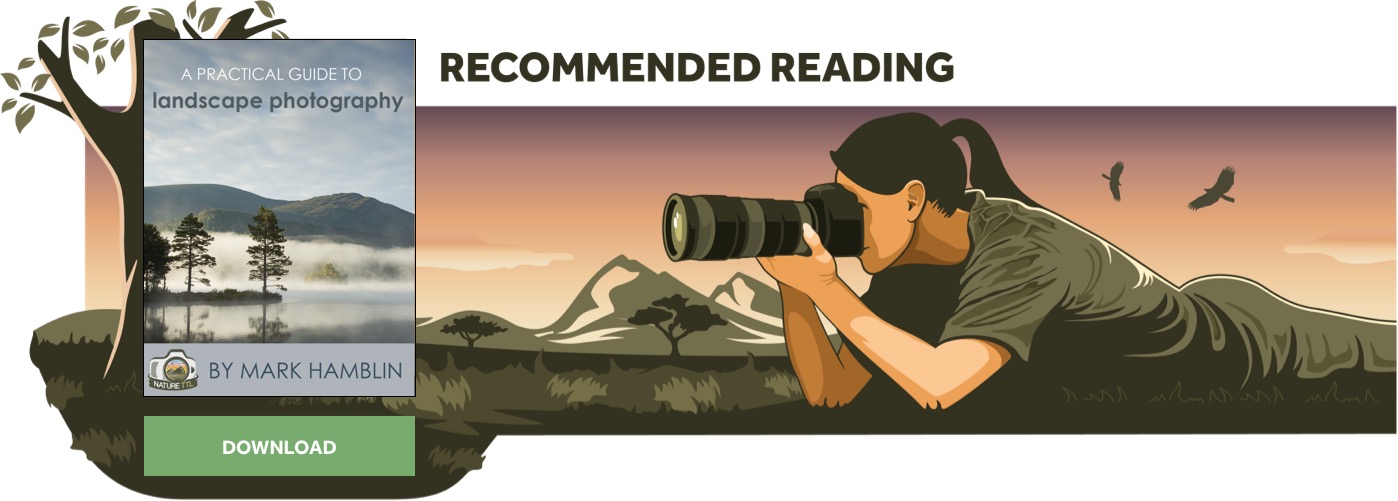How to Photograph Magical Morning Mist

Just what is it about mist that makes it so magical and irresistible to photographers? We are now fast approaching one of the best times of year for misty conditions and I’m sure I’m not the only photographer keeping my fingers tightly crossed that this autumn delivers lots of great, atmospheric mist for us all to shoot. Whether you are photographing wildlife or landscapes, mist has the potential to add mood and a touch of mystery to your photos. If it wasn’t so magical, we wouldn’t be prepared to set our alarms for silly o’clock in the morning whenever the weatherman promises morning mist! The big question is: how do you make the most of the conditions?


Planning
Traditionally, September and October are good months for misty conditions. There are different types of mist and fog. Probably the most appealing in terms of photography is ‘radiation fog’, which forms during clear, still nights when the ground loses heat via radiation. The ground cools nearby air to saturation point, resulting in the formation of mist. This type of mist will often remain attractively close to the ground, forming a thin, white layer at the bottom of valleys and over fields. Mist is frustratingly unpredictable though, and it can be tricky to anticipate just when and where it will form and how dense it will be. However, you will greatly increase your chances of capturing great misty images if you keep a good eye on the weather forecast. Weather forecasting websites like www.metoffice.gov.uk, www.metcheck.com and www.yr.no are good resources – they are often quite reliable within 48hrs. When checking the forecast, look for clear and cool still nights – these are ideal conditions for mist to form. Some sites will predict mist, but if they don’t, look for changes to visibility instead – if visibility drops from ‘excellent’ or ‘very good’ to ‘average’ overnight, there is a decent chance you will be greeted with mist in the morning. Set your alarm early, allowing sufficient time to get to your chosen location for sunrise – bearing-in-mind that if you are driving, your journey will likely be slower due to the reduced visibility.

Location
Deciding on where to visit when it is misty can be quite difficult. You can never be quite sure where it will appear, or how dense it will be, so you have to use your local knowledge or just take a chance. I’ve lost count of the amount of times I’ve arrived on location and it has been either completely clear – with no mist at all – or the fog has been so dense that I’ve not been able to see a thing! It’s a chance you just have to take. However, sooner or later, you will be rewarded with the conditions you were hoping for.
For landscape photography, an elevated viewpoint is a normally the best bet – for example, a view from the top of a mountain or hill, or overlooking a valley. From here, you can get above the mist and achieve far-reaching views. Mist will often form over large bodies of water, so views overlooking lochs or lakes are also a good option. It is worthwhile visiting potential viewpoints in advance. Calculate the sun’s position at dawn using a sun compass or an smartphone application like The Photographer’s Ephemeris, SunScout or PhotoPills. While researching potential locations, look for scenes that include strong, obvious focal points – for example, trees, a church spire, castle ruins or an interesting landmark. This type of feature will provide the harness for your composition.
While large open spaces are great for capturing misty shots, try visiting woodland too – the foggy conditions will simplify busy woodland interiors, enabling you to record graphic, eerie looking images of mist shrouded trees.
Shooting Mist
No other type of condition simplifies the landscape as beautifully as mist. By reducing colour and contrast, it neatly places emphasis on shape and form – which is why no self-respecting photographer can resist the lure of misty weather. Mist is at its most atmospheric just before and after sunrise – once the sun begins to rise, it will begin to evaporate. At dawn, light levels are low, so expect shutter speeds to be lengthy. A tripod is essential for shooting early morning landscapes. You should also carry a wide range of focal lengths. Although a wide-angle is normally the mainstay of landscape photography, longer focal lengths normally suit mist best. A tele-zoom – in the region of 70-200mm – is ideal, foreshortening perspective and emphasising the effect of mist yet further. Longer focal lengths will also allow you isolate key focal points – a skeletal tree, for instance.
Further Reading: “How to Take Great Photos When the Weather is Bad“
Having fine-tuned your composition, consider exposure. Thanks to the sophistication of modern TTL metering systems, it’s unusual for them to be deceived. However, a scene dominated by light, bright mist is likely to fool your camera’s metering into underexposure. Check histograms regularly and apply a degree of positive exposure compensation if required. +1EV is normally a good starting point.
Misty landscapes are typically quite low contrast scenes, so if you practice Exposing To The Right (ETTR), you may find you can ‘push’ your exposure by as much as 2- or 3-stops.
Hopefully, by now, you are feeling inspired and encouraged to set your alarm early and capture some great new misty images. However, before you begin planning, I just have a few, final snippets of advice. Firstly, wrap up warm – it will often be cool and damp during the early starts. It is also worthwhile keeping a lens cloth in your pocket (such as my favourite: Zeiss lens wipes), as your lens/filters may suffer condensation. Lastly, be prepared to work quickly – mist often clears or lifts quickly and the best conditions will soon pass.












